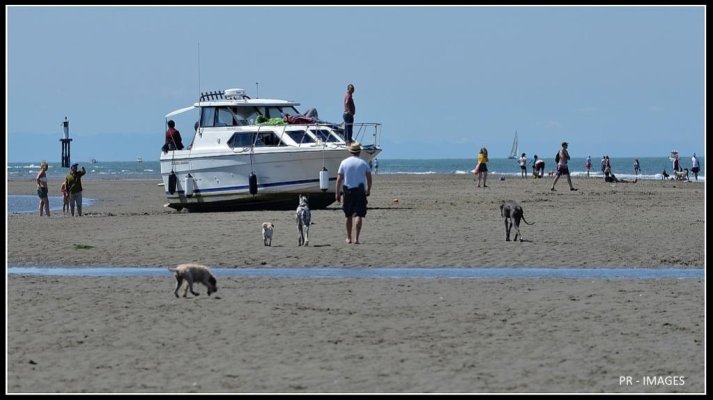For many years - At infinitesimally slow speed (.01 knots)I often purposely run the nose of our Tolly firmly-aground up and onto the relatively soft, wet, yet well rooted and stable edges of small islands in SF Delta. Once nose touches ground I throttle up to raise nose onto island edge to the point that current/wind at that moment (in any direction) will not dislodge boat. Due to some Delta's islands steep drop-off at their edges in sloughs/channels 90 degree angle to the islands with nose firmly aground leaves rear 2/3 of boat in clear water of good depth.
Then I fling a light weight aluminum Viking anchor and line out at bow rail into islands weed and small tree growth (I get about a 40' toss accomplished). I make sure with windless that the flung anchor is well adhered to island growth.
Then I take our runabout and go out off transom some 250' across slough with a Fortress FX-23 aluminum anchor (set at 45 degree shank to fluke with 15' chain to 5/8 line) with my wife feeding line as I go and we drop rear anchor into the Delta's soft mud bottom. We slowly pull Fortress back toward boat until it firmly sets.
Then I go to bow and leave enough line to the front anchor on island so that boat's nose can be backed just a bit off island edge and into deeper water (so that the 4' +/- tide level change is no problem). I do this by starting engines. As I slowly back off island edge my Admiral pulls in rear anchor's then becoming slack line and when I have forward anchor's line fairly taught she fastens the rear anchor's line to our starboard transom cleat.
And a swimming we do go! Perfect for days of party relaxation/enjoyment and running around in our cute, fast Crestliner runabout.
This anchor-out technique is not for everyone and you must know how to read any island's edge to know if this technique will work in that location. Incorrectly attempted there are many bad items that could occur while performing the actions as well as can occur when sleeping, or during tide changes, or because of winds. I've seen some try and fail with damage to their boats and equipment. YRMV
I am always watching the depth sounder wherever I go that I feel water depth may become less than 10' deep under my keel. "So far" in decades of boating, I have never run aground -
unless I wanted to!
Happy Anchor-Out Daze! - Art





 Currently, medical insurance under Medicare (costing more than I was working) plus supplemental health insurance, costs much more than housing (small condominium).
Currently, medical insurance under Medicare (costing more than I was working) plus supplemental health insurance, costs much more than housing (small condominium).




